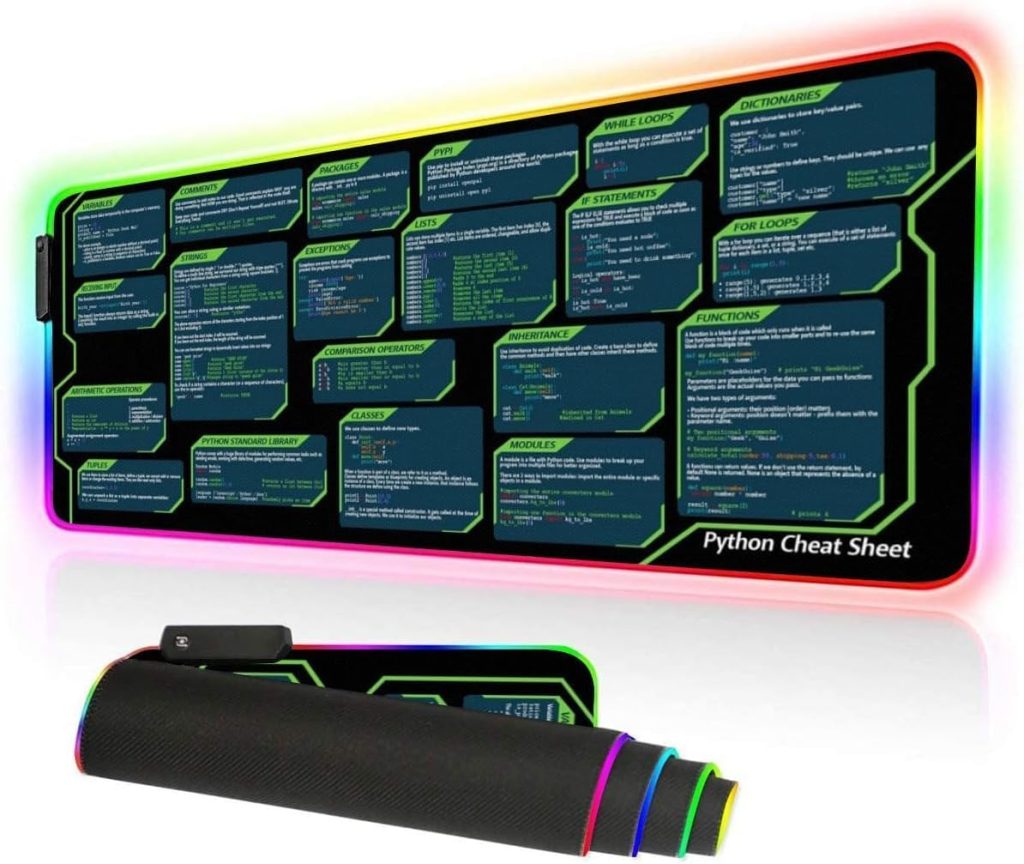
Natural Language Processing, commonly abbreviated as NLP, lies at the intersection of computer science, artificial intelligence, and linguistics. It enables machines to understand and interpret human language in a way this is both meaningful and contextually relevant. The fundamental goal of NLP is to enable communication between humans and machines in a natural manner, allowing for seamless interaction and understanding.
NLP encompasses a variety of tasks, ranging from simple operations such as tokenization to more complex functions like sentiment analysis and machine translation. The intricacies of human language—its syntax, semantics, and pragmatics—pose significant challenges for computational models. As a result, NLP often involves a combination of linguistic insights and statistical methods to process text data effectively.
One of the primary challenges in NLP is dealing with ambiguity. Words can have multiple meanings depending on context, and grammar can be flexible. For instance, the sentence “The bank can refuse to lend money.” can denote either a financial institution or the side of a river, depending on the context. To navigate such complexities, NLP employs various techniques, including part-of-speech tagging and named entity recognition, which help in disambiguating language.
In practical terms, NLP applications include chatbots, text summarization, and information retrieval systems. Each of these applications requires a different approach to processing language, using models that can learn from vast datasets. Machine learning, particularly deep learning, has revolutionized the field, allowing for the development of sophisticated models that can learn from examples and improve over time.
For example, consider a simple implementation of a tokenization process, which breaks down a sentence into its constituent words or tokens. Tokenization serves as a foundational step in many NLP tasks, as it transforms the raw text into a format suitable for analysis.
import nltk from nltk.tokenize import word_tokenize # Sample text text = "Natural language processing is fascinating!" # Tokenization tokens = word_tokenize(text) print(tokens) # Output: ['Natural', 'language', 'processing', 'is', 'fascinating', '!']
This code utilizes the nltk library, an essential toolkit for NLP in Python. The word_tokenize function efficiently splits the input text into individual words and punctuation marks, forming a list of tokens that can be further processed.
As we delve deeper into the intricacies of NLP, it becomes evident that understanding language is not merely about processing words but also involves grasping the underlying meaning and intent. The interplay of syntax and semantics, along with the cultural and situational context, shapes how we interpret language. Thus, NLP represents not just a technical challenge but a profound exploration into the very nature of human communication.
Key Python Libraries for NLP
In the sphere of Natural Language Processing, Python has emerged as a preeminent programming language, thanks to its simplicity and the wealth of libraries designed specifically for language processing. Understanding these libraries is important for anyone aiming to develop sophisticated NLP applications.
Among the most prominent libraries are NLTK, spaCy, and Transformers. Each of these libraries offers unique functionalities that cater to various aspects of NLP, allowing practitioners to select tools that best fit their specific needs.
NLTK (Natural Language Toolkit) is one of the oldest and most widely used libraries for NLP. It provides a comprehensive suite of tools for text processing, including tokenization, stemming, tagging, parsing, and semantic reasoning. With its extensive collection of corpora and lexical resources, NLTK is particularly useful for educational purposes and research.
import nltk
nltk.download('punkt') # Download the Punkt tokenizer models
from nltk import pos_tag
from nltk.tokenize import word_tokenize
sentence = "The quick brown fox jumps over the lazy dog."
tokens = word_tokenize(sentence)
tagged = pos_tag(tokens)
print(tagged) # Output: [('The', 'DT'), ('quick', 'JJ'), ('brown', 'JJ'), ('fox', 'NN'), ...]
This example illustrates how NLTK can be used for part-of-speech tagging, which assigns grammatical labels to each token in a sentence—integral for understanding sentence structure and meaning.
spaCy, on the other hand, is designed for industrial-strength NLP. It boasts fast performance and ease of use, making it suitable for production environments. SpaCy comes with pre-trained models for various languages and supports advanced tasks such as named entity recognition (NER) and dependency parsing.
import spacy
# Load the English NLP model
nlp = spacy.load("en_core_web_sm")
text = "Apple is looking at buying U.K. startup for $1 billion"
doc = nlp(text)
for entity in doc.ents:
print(entity.text, entity.label_) # Output: Apple ORG, U.K. GPE, $1 billion MONEY
The above code demonstrates spaCy’s ability to recognize entities within text, categorizing them into types such as organizations, geopolitical entities, and monetary values. This functionality is vital for applications like information extraction and sentiment analysis.
Lastly, the Transformers library by Hugging Face has revolutionized the field by providing access to state-of-the-art pre-trained models based on architectures such as BERT, GPT, and T5. These models excel in tasks that require understanding context and generating human-like text.
from transformers import pipeline
# Load sentiment-analysis pipeline
sentiment_pipeline = pipeline("sentiment-analysis")
result = sentiment_pipeline("I love using Python for NLP!")
print(result) # Output: [{'label': 'POSITIVE', 'score': 0.9998}]
In this instance, the Transformers library is utilized to perform sentiment analysis, showcasing its ability to interpret the sentiment of a given sentence with remarkable accuracy. The convenience of using pre-trained models accelerates development, allowing practitioners to focus on application rather than model training.
As we explore the potential of these libraries, it becomes clear that each serves distinct purposes and excels in different areas of NLP. The choice of library often depends on the specific requirements of the project at hand, including factors like complexity, speed, and the need for pre-trained models. By using these powerful tools, developers can harness the full capabilities of NLP to transform raw text into meaningful insights.
Text Preprocessing Techniques
Text preprocessing is an essential step in the context of Natural Language Processing (NLP), serving as the foundation upon which more complex tasks are built. It involves transforming raw text data into a format that is clean, consistent, and ready for analysis. The intricacies of human language necessitate a careful approach to preprocessing, as the quality of the input data directly influences the performance of NLP models.
One of the primary techniques in text preprocessing is tokenization, which divides a text into smaller units called tokens. Tokens can be words, phrases, or even characters, depending on the granularity required for the analysis. The choice of tokenizer can significantly impact the results of downstream tasks. For instance, when using NLTK, one can employ either word or sentence tokenization:
import nltk from nltk.tokenize import sent_tokenize, word_tokenize # Sample text text = "Natural language processing is fascinating! It enables machines to understand human language." # Sentence Tokenization sentences = sent_tokenize(text) print(sentences) # Output: ['Natural language processing is fascinating!', 'It enables machines to understand human language.'] # Word Tokenization words = word_tokenize(text) print(words) # Output: ['Natural', 'language', 'processing', 'is', 'fascinating', '!', 'It', 'enables', 'machines', 'to', 'understand', 'human', 'language', '.']
Following tokenization, normalization is often performed to standardize the text. This may include converting all characters to lowercase, removing punctuation, and eliminating stop words—common words that add little meaning, such as “and,” “the,” and “is.” Normalization helps reduce the dimensionality of the data and can improve the efficiency of models. Below is an example of how to normalize text using Python:
import string
# Function to normalize text
def normalize_text(text):
# Convert to lowercase
text = text.lower()
# Remove punctuation
text = text.translate(str.maketrans('', '', string.punctuation))
return text
# Sample text
raw_text = "Natural Language Processing is fascinating!"
normalized_text = normalize_text(raw_text)
print(normalized_text) # Output: natural language processing is fascinating
Another critical preprocessing technique is stemming and lemmatization. Both methods aim to reduce words to their base or root forms, but they differ in their approaches. Stemming truncates words to their stem, which may not always be a valid word, while lemmatization considers the context and converts words to their dictionary form. Here’s how both can be implemented using NLTK:
from nltk.stem import PorterStemmer, WordNetLemmatizer # Initialize stemmer and lemmatizer stemmer = PorterStemmer() lemmatizer = WordNetLemmatizer() # Sample words words = ["running", "ran", "better", "feet"] # Stemming stems = [stemmer.stem(word) for word in words] print(stems) # Output: ['run', 'ran', 'better', 'feet'] # Lemmatization lemmas = [lemmatizer.lemmatize(word) for word in words] print(lemmas) # Output: ['running', 'ran', 'better', 'feet']
Finally, vectorization is a pivotal step that transforms text into numerical representations, enabling models to perform mathematical operations on the data. Techniques such as Bag of Words (BoW) and Term Frequency-Inverse Document Frequency (TF-IDF) are commonly used for this purpose. Below is an illustration of how to apply TF-IDF vectorization using the scikit-learn library:
from sklearn.feature_extraction.text import TfidfVectorizer
# Sample documents
documents = [
"Natural language processing is fascinating.",
"I love programming in Python for NLP."
]
# Initialize TF-IDF Vectorizer
vectorizer = TfidfVectorizer()
tfidf_matrix = vectorizer.fit_transform(documents)
# Display the TF-IDF matrix
print(tfidf_matrix.toarray())
By applying these preprocessing techniques—tokenization, normalization, stemming, lemmatization, and vectorization—one can significantly enhance the quality of the input data for NLP tasks. The effectiveness of an NLP model is closely linked to the rigor of its preprocessing pipeline, marking it as a critical phase in the overall process.
Building Simple NLP Applications with Python
Building simple NLP applications with Python can be an exhilarating endeavor, bringing together the elegance of programming with the complexities of human language. By using the previously discussed libraries and techniques, one can create applications that perform meaningful tasks, such as sentiment analysis, text classification, and chatbot development. Below, we will explore a few simpler examples that demonstrate the practical application of NLP in Python.
One of the most fascinating applications of NLP is sentiment analysis, which involves determining the emotional tone behind a series of words. This can be particularly useful for businesses looking to gauge customer feedback or for researchers analyzing social media sentiments. Using the Transformers library, we can quickly implement a sentiment analysis application with minimal effort.
from transformers import pipeline
# Load sentiment-analysis pipeline
sentiment_pipeline = pipeline("sentiment-analysis")
# Sample text for analysis
texts = [
"I absolutely love the product!",
"This is the worst experience I've ever had.",
"It's okay, nothing special."
]
# Analyze sentiments
for text in texts:
result = sentiment_pipeline(text)
print(f'Text: "{text}" - Sentiment: {result[0]["label"]}, Score: {result[0]["score"]:.4f}')
In the code above, we first import the necessary pipeline from the Transformers library. We create a list of sample texts, each representing a different sentiment. The pipeline processes each text and outputs the sentiment label along with a confidence score. This simple implementation illustrates the power of pre-trained models in making complex analyses accessible.
Next, we can delve into text classification, which involves categorizing text into predefined labels. For instance, one might want to classify news articles into topics such as sports, politics, or technology. Using the scikit-learn library, we can build a rudimentary text classifier using the Bag of Words model.
from sklearn.feature_extraction.text import CountVectorizer
from sklearn.naive_bayes import MultinomialNB
from sklearn.pipeline import make_pipeline
# Sample data
data = [
("Sports event draws crowds", "Sports"),
("Political debates heat up", "Politics"),
("Technology advances in AI", "Technology"),
("Local team wins championship", "Sports"),
("New policy changes announced", "Politics")
]
# Split data into texts and labels
texts, labels = zip(*data)
# Create a pipeline for vectorization and classification
model = make_pipeline(CountVectorizer(), MultinomialNB())
# Train the model
model.fit(texts, labels)
# Sample prediction
sample_texts = ["New records in football", "Government announces new tax reforms"]
predictions = model.predict(sample_texts)
for text, label in zip(sample_texts, predictions):
print(f'Text: "{text}" - Predicted Category: {label}')
This code snippet illustrates how to prepare a simple text classification model using scikit-learn. We define a small dataset of text-label pairs, create a pipeline that combines vectorization and the Naive Bayes classifier, and train the model on the provided data. Finally, we make predictions on unseen texts, showcasing the model’s ability to categorize new information based on learned features.
Lastly, we can explore the construction of a basic chatbot that responds to user input. By employing the NLTK library, we can create a rule-based chatbot that provides predefined responses based on keyword matching.
import nltk
from nltk.chat.util import Chat, reflections
# Define pairs of patterns and responses
pairs = [
[
r"my name is (.*)",
["Hello %1, how can I help you today?",]
],
[
r"hi|hey|hello",
["Hello!", "Hey there!",]
],
[
r"what is your name?",
["I am a chatbot created to assist you.",]
],
[
r"quit",
["Goodbye! Have a great day!",]
]
]
# Create chatbot
chatbot = Chat(pairs, reflections)
# Start conversation
print("Chat with the bot! (type 'quit' to stop)")
chatbot.converse()
In this example, we define a list of patterns and corresponding responses. The chatbot utilizes regular expressions to match user input with these patterns, providing an appropriate response. This simple interaction showcases how basic NLP techniques can facilitate human-like conversations, offering a glimpse into the potential of more advanced systems.
By combining these various applications, one can begin to appreciate the richness of NLP and its ability to bridge the gap between human language and machine understanding. The examples provided serve as foundational blocks, allowing developers to build upon them and create more sophisticated applications that harness the power of language processing.






